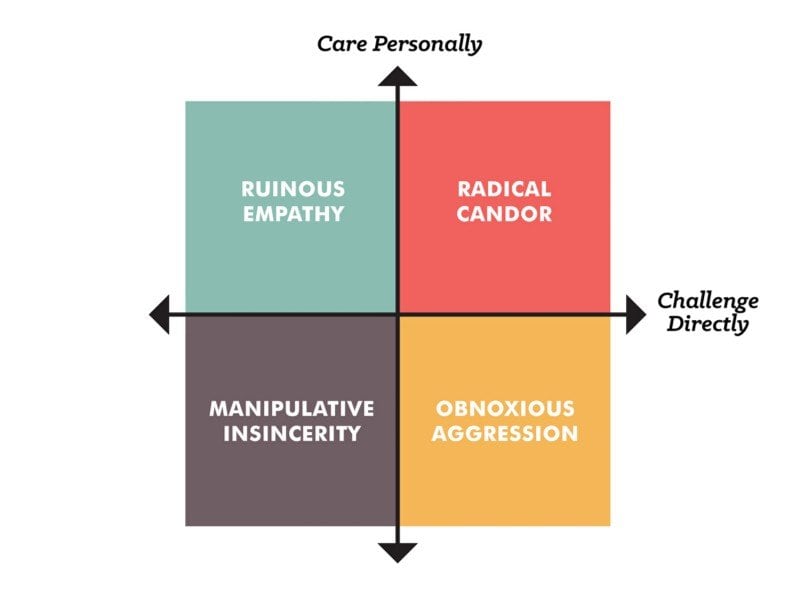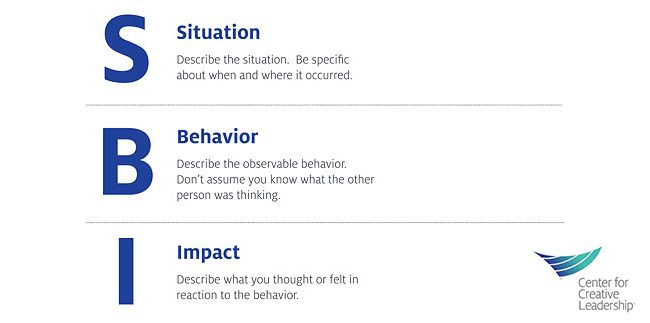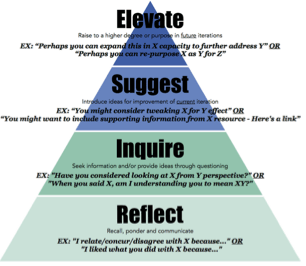How to Reinvent the Performance Review with Feedback Frameworks

Imagine you start a new office management job in July but don’t hear about your performance until there’s snow on the ground. This is the norm in many companies that use a system of formalized annual reviews, which often consist of sitting down with your boss to discuss what went well and what didn’t. While this may seem like a good system in theory, it means always hearing about issues long after they’ve happened—and long after anything can be done.
Fact is, traditional feedback mechanisms aren’t cutting it.
“It doesn’t provoke open conversation due to the lack of specific examples throughout the year,” describes one Ninja about her experience with traditional annual feedback. “It’s hard to recall things that happened months or even a week ago!”
A 2015 study found that most performance appraisal systems are “far from perfect.” Problems with objectivity, rating judgments, and interpersonal conflicts are all shortcomings of many of today’s performance review systems. That’s where a bit of formality comes into play.
Feedback frameworks aim to transform these traditional performance systems by offering the best possible feedback to employees when it’s needed most. While you may be in favor of an official framework, it’s also important to understand what goes into any framework beyond timely verbal updates.
Wait, What Is a Feedback Framework?
A feedback framework seeks to demystify the process of reviewing performance in the workplace. Each framework answers the basic questions of who is evaluated and why, what work is assessed, when and where reviews take place, as well as how these reviews are conducted.
From a system of formal performance reviews to more informal, impromptu feedback given in the moment, feedback frameworks can take many shapes. A framework sets the direction and tone for evaluations given within an organization. By creating expectations for both the giving and receiving parties, there aren’t any surprises when conversations unfold.
Why Is a Framework Important?
Quality feedback leads to learning opportunities that produce performance improvement. And everyone wants to be better at the work they do, right?
A 2013 study shows that effective evaluations are the backbone of learning and performance improvement. And that’s not the only study to champion feedback—other research confirmed that it’s important for individuals to achieve mastery of their goals.
Along those lines, studies have also found that poor feedback most likely gets ignored. That’s why frameworks are useful to define the type of feedback that’s most valuable and when to deliver it, so employees can quickly learn and improve. As one Ninja says, “Whether feedback takes place through formal or informal networks isn’t the main issue, it’s about the timeliness and candor of the feedback.”
What Frameworks Do You Have to Choose From?
These four well-known feedback frameworks get the most buzz, but each comes with its own pros and cons.
1. Radical Candor
Radical Candor is achieved when feedback is given with both personal care and direct challenge. It’s used successfully by Ryan Harwood, founder and CEO of women’s lifestyle site PureWow. One Ninja has seen success with this model, too.
“In my weekly syncs with my executive, I adopt the radical candor feedback style about my observations during his presentations, interactions with team members, and general suggestions on things I pick up around the office. I find these sessions are infinitely more valuable than our yearly reviews.”
Pros of Radical Candor:
- With this framework, feedback is kind and clear, given in the moment.
- Both praise and criticism can be delivered with Radical Candor by creating a culture of feedback.
Cons of Radical Candor:
- Too often, Radical Candor is mistaken for brutal honesty. Care must be taken to provide feedback that’s both kind and helpful—never mean, obnoxious, or aggressive.
2. Situation, Behavior, Impact
This framework is used by Nancy Lublin, CEO of Crisis Text Line. Her team uses the approach to target actions in the moment.
For example, if a team member isn’t engaged during a meeting, you would explain the situation, “In this morning’s meeting,” then the behavior, “you were on your computer the whole time.” Finally, explain the impact. “This made me feel like you weren’t really listening, which made me worry if the project will move forward.”
Pros of Situation, Behavior, Impact:
- This framework is simple to implement with few tweaks.
- Those receiving feedback understand precisely what they can improve.
Cons of Situation, Behavior, Impact:
- It can be easy to give ineffective feedback with this method if it’s personal or too vague.
3. Feedforward Coaching
Feedforward coaching is based on the premise that the fundamental problem with other frameworks is their focus on the past—meaning feedback is limited and static. Feedforward happens when the receiver identifies an area they’d like to improve. Then, their partner gives two suggestions for the future to help achieve positive change.
Pros of Feedforward Coaching:
- This method focuses on the future rather than the past, making feedback more dynamic and forward-facing.
- Performance is improved by looking ahead to what can go right, rather than where things went wrong.
Cons of Feedforward Coaching:
- Feedforward can only happen if the receiver is receptive to changing their behavior in the future.
4. 360 Degree Feedback
This feedback model is the most used and well-known of the list. The 360 degree framework delivers feedback from multiple sources, designed to give receivers a panoramic view of their performance. 360 degree feedback is used by big brands like PepsiCo and Starwood Hotels. In fact, an online provider of 360 degree surveys reports that 90 percent of Fortune 500 companies use some sort of 360 degree feedback variation.
Pros of 360 Degree Feedback:
- Feedback is provided from many different perspectives: subordinates, peers, and supervisors.
- Multiple raters mean the person receiving feedback has increased self-awareness and accountability.
Cons of 360 Degree Feedback:
- A Ninja summed this one up best. “360 feedback platforms rely on the employee suggesting who should be contacted for giving feedback. Most people will opt in, choosing only the best of the best ‘references’ for the feedback.”
Implementing a Feedback Framework
If you’d like to receive more timely and specific feedback, one of these models could work. The best part? You don’t even need to wait for HR approval!
- First, evaluate the many feedback frameworks out there with your company’s culture and your supervisor in mind. How well each framework performs is directly related to those using it.
- During your next check-in, speak to your boss about how you’d like to receive feedback using your framework of choice. Come prepared with some facts about the model you’d like to implement and a quick explanation of how it works. Expect some trepidation toward implementing a feedback framework; your boss may see this as just another item on an already full plate.
- Set a date. Make an agreement for when the feedback framework will be put into practice and how often feedback will be discussed formally.
- Practice what you preach. When it comes time to put this into practice, demonstrate your professionalism by giving and receiving feedback with grace.
- Follow up. After a few months of using a feedback framework, check in with your supervisor to discuss how well it’s working. Another framework may be even better suited to your situation.
“I have great success with my C-level executives (in particular the CEO I support) where once a quarter we schedule a 3-hour off-site session (usually over dinner at a local restaurant). I show up with an entire agenda based off of the Start: Stop: Continue Model and pretty much communicate to the CEO what he needs to start, stop, and continue. I request that he do the same for me in the same format. It is ‘compassionate candor’ based, and when he saw how in depth, thoughtful, and prepared I was with my first agenda, he took it really seriously thereafter.” – Lynn W., Executive Administrator
No Matter How, Quality Feedback Is Essential
A robust framework is essential to ensure both employees and supervisors receive the best possible feedback. No matter what your title is, this is a crucial aspect of learning and improving. Ninjas, of course, can lead the charge by implementing a feedback framework and pushing it to trickle down through the entire organization.
Ninjas, have you had a feedback experience that surprised or delighted you? Tell us what happened!




Thanks so much for a great and well timed article. The Start: Stop: Continue Model is one that I’ll look forward to using … soon. With appreciation, Erin
Let us know how it works out, Erin!
Really great article with a high level view of the various Performance Feedback loops out there – I appreciate the review of the most utilized frameworks (alongside mentioning the pros & cons), as different industries and different sized companies could be better aligned with one style vs. another. Awesome!
Thanks for the love, Lynn! We’re glad you learned a thing or two ;)